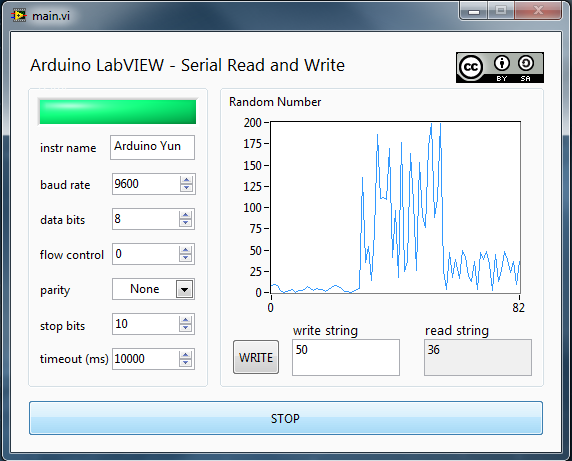

This will allow multiple digits to be sent as one numeric value. For example, you could send the values like. This lets you run many tests inside the Serial Monitor without having to restart the Serial Monitor each time.Īs for your original problem, you should probably have some sort of data delimiters. Note that you can force a reset, just by setting the baud rate to 9600 (even if it is already 9600). This is a good thing because it gives you a fresh run each time.

Bringing up the Serial Monitor forces a reset on the Arduino board. Make absolutely sure that the baud rate set inside the Serial Monitor exactly matches the baud rate in your sketch (9600 is a good choice in almost all cases). Often I find myself outputting to the serial monitor, copy-pasting data into excel, formatting, doing calculations. It will frequently be quite helpful if your sketch tries to send data back via Serial.print(). Has lead me to explore the options of getting Arduino serial output into Python. You can also type Ctrl-Shift-M to invoke the Serial Monitor. You can find the Serial Monitor under Tools in the IDE menu. On my laptop I have Xubuntu running as virtual machine, I can read the serial port via Putty and via my script (python 2.7 and pySerial) The problem: When opening the serial port via Putty I see all messages (the counter in the message increments 1 by 1). First, try to run your Arduino sketch with the Serial Monitor a few times. Let me try to offer a few comments that might be helpful to other folks with similar problems (even though this problem has been solved). This also means that you'll be receiving a byte that is your number and not the ascii value of the number so you don't need to convert the read in line from a value to ascii. import csv import serial Open com port ser serial.Serial ('COM4', 115200) with open ('datafile.csv', 'w') as newfile: csvwriter csv.writer (new. For this reason, we choose arbitrarily to stop reading after 10 lines. This is simply solved by using Serial.write instead of Serial.print in the the arduino sketch. In this case, since all the lines end with E, we don't have any way to know when to stop processing the lines. for example, the number '10' comes in as a single '1' and '0'. However this causes another problem in that it prints individual digits. import serial import time ser serial.Serial COM7, baudrate 9600, timeout 1) time.
PYTHON READ SERIAL DATA FROM ARDUINO CODE
48-55 are the ascii values for 1-9 so it's a matter of changing the python code to print the character not the value. Why isn't Python getting the correct values from the serial port? When I run the arduino serial terminal I get values that range from 0-179. This output came from a straight, slow increase on the potentiometer, I never turned it down at any point. Serial.print(val) // print the value from the potentiometer Int oldVal = 0 // used for updating the serial print My code allows to obtain CSV as follows: My Arduino code for serial output: Serial.print(sensorValue1) Serial.print(',') Serial. I want to save data in format: time, sensor1, sensor2 as numbers allowing to open them in Excel in separate columns. Int val = 0 // variable to store the value coming from the sensor I am trying to write serial port data from Arduino to CSV file in Python. Print( str(count) + str( ': ' ) + str( line ) )Īrduino Code: int potpin = 0 // analog pin used to connect the potentiometer By first sending them to the Arduino, which will in turn send it back to the computer that Python then prints out.I'm trying to read potentiometer values from an arduino using python. To test my code, I used an Arduino to put some data on the serial port.
PYTHON READ SERIAL DATA FROM ARDUINO INSTALL
Once you run the program it will print out the majority of ASCII characters. Python 3.x Matplotlib pyserial Arduino (or any programmable device with a serial port) Installing matplotlib and pyserial on Ubuntu 18 sudo apt-get install python3-matplotlib sudo apt-get install python3-serial Generating some fake serial data with an Arduino. You can also change the baud rate in line 3 of the Python program and line 2 of the Arduino program as long as they stay the same. Whatever that is should be what is in quotes in line 3 of the Python program. To determine what serial port your Arduino is connected to look at the bottom right corner of your Arduino sketch. Sleep(.1) # Delay for one tenth of a second Print ser.readline() # Read the newest output from the Arduino Ser.write(str(chr(counter))) # Convert the decimal number to ASCII then send it to the Arduino Ser = serial.Serial('/dev/tty.usbmodem1d11', 9600) # Establish the connection on a specific portĬounter = 32 # Below 32 everything in ASCII is gibberish import tkinter as tk import serial Serial imported for Serial communication import threading Create the master object root tk.Tk () ArduinoSerial serial. Next in Idle create a new window and create the below program.


 0 kommentar(er)
0 kommentar(er)
